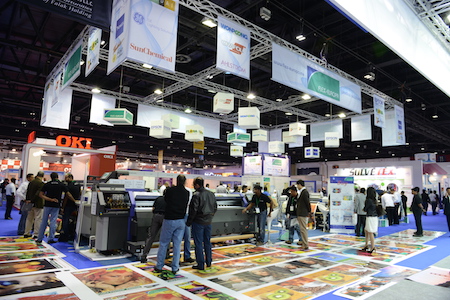 By Sabine A. Slaughter
By Sabine A. Slaughter
Wandering around the aisles at SGI and looking at all the offerings one has to wonder what is next for the advertising and communications industry. From screen printing to digital printing and on to digital signage, from cutting to laser cutting and even 3D-form cutting, from lamination to sophisticated application of all kinds of media - all is there to see at the Sheikh Saeed Halls at the World Trade Center.
So it is hard for us journalists to just pick one theme that occupies the masses, so to say. As diversified as the offerings are the solutions and more over the issues each printer and communications provider faces.
However, let us start where every signage product has to start - at the design phase. Designing is innovation, is creating somehing new that will attract the consumer to interest himself for a certain product. Printers shall bring this product to life by employing their best tools. While within the traditional screen printing arena, where the workflow still is mainly manual, not much can be streamlined, it looks different in the digital world. All those large format printers want to be fed with the right data in order to produce a product that is not only beautiful and stunning but whose colors are as accurate as possible.
For this a reliable workflow needs to be established that reflects the high quality of the designs. It should be integrating seamlessly and without loss of data. As in today's global environment companies are not only acting locally, but regional and worldwide those design data that are arriving at the print shop have to be printed according to certain standards whereby each time the "right" color has to be achieved. Especially global campaigns from worldwide available brands are quite often posing an issue: Can each participating printer achieve the same color? Yes, sure he can. However, it requires accurate color management at each print site. And even if and when local campaigns are printed at one site only, color management is a must.
Nowadays special color management software that integrates into most workflows is available - and a lot of RIP-programs also offer certain colormanagement functionalities that all, via profiles, can adhere to standards such as ISO, Fogra, GrayCol and many others.
What does this mean for all the print service providers and what should be done? When printing with digital printers, a fully digital workflow is required and should be established. Existing workflows or parts of workflows can be integrated in order achieve a high degree of automation but also to "always print the right color at the right spot". Thus beautiful and color accurate products are produced.
Even if a printer 's sales territory is only locally, he should consider it important to achieve the highest quality possible in order to satisfy his clients and outperform his competition. And who knows, maybe there will be a repeat order of the same product and the client expects the same color achieved that the first print run showed - so who can deny a client this wish? I guess no one.